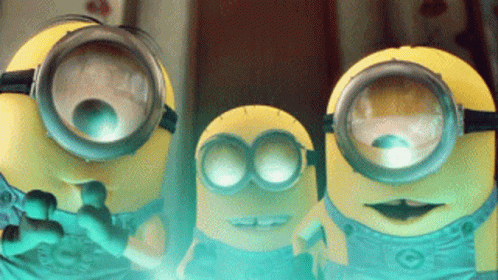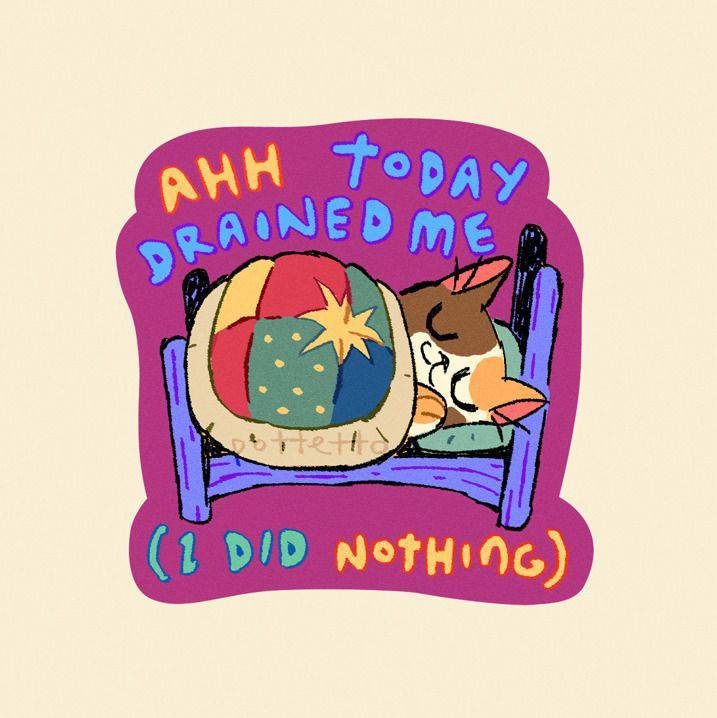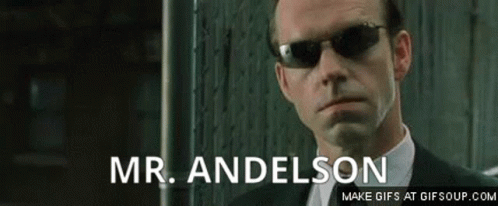UK airport liquid rules for December 2024 – what can you take on a plane?
We all know not to bring sharp items on planes when travelling, as well as to take off boots or belts at the security scanner. However, when it comes to liquids in your hand luggage, it’s hard to keep track of what you can and can’t pack.
Holiday travel prep: Delta teams and technology ready to make your journeys bright
Delta teams are ready to fly 9.3 million customers on more than 75,000 flights from Dec. 20 to Jan. 6. Here are a few ways customers can get ready for their holiday travel.
Consumer group warns air travel ticket websites are unfairly overcharging customers
Popular airline ticket websites advertise cheap flights but often charge significantly higher prices for baggage, seat reservations, and other services, according to research by Dutch consumer association Consumentenbond. The organization warns travelers to book directly with airlines to avoid hidden fees and misleading offers.
Opinion: Despite the horrible rides to LAX, lost luggage, missed flights, here's why travel is always worthwhile
As an L.A. native and a professional traveler, I know getting a ride to LAX is rarely fun. But even I was tested in summer 2023 after an Uber and then a Lyft canceled on me when I needed to be at the airport in an hour and a half.
But ultimately, navigating the logistical maze of transportation issues, hotels and languages is a token toll for the thrill of joining with people for meals, songs, fashion and conversations I would never otherwise experience.
So, after working for this platform assisting students with their assignments for more than four years, I am being laid off to make way for an AI that was likely trained using some of the content I generated.
How can I push for compensation?
I will no longer be with the platform but my work would still be used.
I am gearing up for a local Radio interview about my book. Waiting to get some paperback copies in hand so we can give away some to the listeners.
Exciting times :)
The word "legal" means "adheres to the code of the law". 🤔🤯 Maybe PEPE frogs have a different meaning for that word, or is not in their dictionary at all. 🤯😅 !WEIRD !INDEED !DIY
@savvytester just sent you a DIY token as a little appreciation for your comment dear @pepetoken!
Feel free to multiply it by sending someone else !DIY in a comment :) You can do that x times a day depending on your balance so:
@savvytester just sent you a DIY token as a little appreciation for your comment dear @pepetoken!
Feel free to multiply it by sending someone else !DIY in a comment :) You can do that x times a day depending on your balance so:
Fun fact: Joe Nakamoto blocked me for recommending the exact same thing as he's recommending here! Very politely, too.
He was recommending the fully-custodial Wallet of Satoshi instead. He only mentions Phoenix because he's talking to someone who will immediately shut down any custodial suggestions.
These people are snakes, grifters, and gaslighters.
Lots of people see value in the Bitcoin Lightning Network. That's fine. But don't listen to anyone who unequivocally says "Lightning works".
Large-scale synthetic data generation would become accessible to a wide range of users. Smaller and specialized models (SLMs, fine-tuned models or expert RAG-powered AI applications) can generate synthetic data with a higher quality compared to larger SoTA LLMs.
This is from a research paper....the idea is spreading.
Join us TODAY for a fun info-packed live #twitch SUPER #STREAM as we cover this week's #wax Blockchain news, hear from guest speakers, #watch2earn, and play games! 🎉
@mightpossibly Does your ai-driven bot work with Twitch videos? So that the @consumerbreak's streams would also be summarized - the WAX drops related ones are packed with a ton of data!!
Unfortunately no. Because Twitch does not transcribe livestream recordings, there is no transcription to generate the summary off of. It works with youtube videos because yt generates subtitles for all videos.
I.e. if the consumerbreak livestreams were to be uploaded to youtube, it would work.
Hi, wax digital assets, and games is working good with hive blog system.
Wish you all a great wax Wednesday, and an awesome time with ConsumerBreak
h2n2a.c.wam
Every week is open to anybody! We usually get a handful of speakers, and the news/drop list is FILLED with projects including art, games, miners, videos, and music!!
➡️ https://tinyurl.com/waxdrop-december-18
Awesome! I'd like to come on and talk about the AI summaries project I'm running on inleo. I'm not entirely certain I'll make it this week, but I'll try (working towards a deadline that I need to deliver on tonight). Worst case, it will be another time
$HBD with a mixing protocol could fix this. Dash Evolution chain may come up with some stablecoin backed by Dash similar to how BitShares had their pegged assets for fiat and precious metals.
Feel free to share all entertainment updates across the world
Entertainment shorts and long videos are welcome
You can paste the link of any video and invite your friend to join you to watch it as discussion goes on
You can invite friends and make a chat section as you enjoyed your activities on Leo, different entertainment activities are welcome
Don't forget to subscribe to @mightpossibly, so you can be able to use the #aisummaries tool to feed in YouTube entertainment video on this cast.
Again, I get your point and not arguing about that. SOL & ETH are two L1s and so is HIVE. While Arb, and OP are L2s and H-E works on the second layer SO, my point was that a better comparison would've been ETH to some L2 instead of Solana. In other words, still within the ecosystem no matter how we feel about L2s.
Let's take Inleo for example, build on Hive, LEO token on L2, claimable on H-E, can be staked there as well.
I see a connection there. Similar to what ETH & OP have.
right, but Inleo is also available on other chains not just HE.
i can see this as Leo technically uses the HE smart contract for its L2.
but HE itself has no connection to Hive.
I see what you are saying. I don't disagree, but my point is HE has zero connections to hive other then piggybacking off the userbase with a simple wallet login.
and a wrapped token (swap.hive)
Taking a look at voucher cards today in #splinterlands and how they impact the ecosystem and markets. Check it out in the article found in the comments.
1/🧵
Monsuroh, I want to explore a new career path, but I’m scared. I will need to spend a lot of money and time exploring this new path, but what if it doesn’t work out for me? I’ll need to go back to school for a postgrad study of two years, meaning that I would waste time too, but you know, I’m not getting any younger. I’m so scared because I don’t know what might happen. What if it doesn’t work out?
#outreach #threadstorm #emotionsfeelings
Fear is part of what makes us human anyway, but it always creep into our lives when we are about to make big decisions, but what's the worst that can happen?
XRP has recently surpassed Tether (USDT) to reclaim its spot as the third-largest crypto by market cap, following Bitcoin and Ethereum. Meanwhile, this sudden rise follows the global launch of Ripple’s new stablecoin, RLUSD.
haha you're right on that, yep I did and now I'm about to enjoy the holidays and laugh at my friend Garry because he ain't getting no holidays till the day of Christmas
✈️ Travel Tales, Talk & Tips
#threadcast 122
Wed 18-Dec-24
ℹ️ This is the #travelcast where we chat all things #travel
💬 Talk about your trips, discuss adventures and enjoy the world's delights!
Bon voyage! 🧳 🛫
Discover Wisconsin -- Lake Geneva Winter Bucket List
!summarize
Welcome to the Wednesday TravelCast! Share all your travel chit-chat right here...
Yesterday's edition:
https://inleo.io/threads/view/adambarratt/re-leothreads-6az2jcvu
48 Hours in Salzburg - Chad and Claire
!summarize
Salzburg Austria Travel Guide: 15 BEST Things To Do - Before You Go
!summarize
How to avoid travel chaos on road and rail this Christmas and New Year
Article via The Independent
Unfree movement — why can’t Africans travel around Africa?
Article via Financial Times
Here’s how to stop your luggage going missing on a flight
Article via Express
UK airport liquid rules for December 2024 – what can you take on a plane?
Article via Metro
Holiday travel prep: Delta teams and technology ready to make your journeys bright
Article via Delta News Hub
Eurowings launches new direct flights from Berlin to the Algarve region
Article via TTW
Consumer group warns air travel ticket websites are unfairly overcharging customers
Article via NL Times
'Best' airline to get an upgrade named with great customer experience and overall comfort
Article via Express
📍 Cyprus 🇨🇾
👉 What to do on this Mediterranean island?
🎞️ Scenic Hunter YouTube channel give their top 10 tips!
!summarize
Cyprus guide by 'Wout of the World'
!summarize
Why is Cyprus Divided? (Short Animated Documentary) - History Matters
!summarize
The Cyprus Roadtrip, travel documentary - BackPacker Steve
!summarize
Top 10 Places To Visit in Cyprus - Travelmoji
!summarize
The History of Cyprus Explained in 10 minutes - Epimetheus
!summarize
Destination dupes and cowboy core—how travel will look in 2025
Article via National Geographic
The 2025 Outlook - Article via Business Travel News Europe
Foreign Office's major change to Israel advice 15 months after 'no travel' warning
Article via Express
Opinion: Despite the horrible rides to LAX, lost luggage, missed flights, here's why travel is always worthwhile
Article via Los Angeles Times
Wonders of Costa Rica | The Most Amazing Places in Costa Rica | Travel Video 4K
!summarize
#gmfrens! Here is the Motivation, Inspiration, Success #threadcast for Wednesday 12/18/2024. #1440minutes #motivationsonleo #inspirationonleo #successonleo #motivation #inspiration #success
So, after working for this platform assisting students with their assignments for more than four years, I am being laid off to make way for an AI that was likely trained using some of the content I generated.
How can I push for compensation?
I will no longer be with the platform but my work would still be used.
#askleo #AI
wHich platform is that ?
I signed an NDA and may not be able to disclose as a result. I'm better off without a job than combining joblessness with a legal face off.
I am gearing up for a local Radio interview about my book. Waiting to get some paperback copies in hand so we can give away some to the listeners.
Exciting times :)
Wishing you all the best. Go and ace it!
Thanks so much :) !BBH !DOOK
@bradleyarrow likes your content! so I just sent 1 BBH(13/100)@gentleshaid! to your account on behalf of @bradleyarrow.
(html comment removed: )
)
Exciting indeed! What is your book about? I don't think we get Canadian radio stations here.
!BBH
It is about my wifes 10 years of living with cancer :)
Search Amazon for: Bradley Sean Anderson. Kindle version is out now. Waiting for paperback to be released in a few days.
Oh, that sounds interesting. Quite a journey.
!BBH
Let me know if you deside to pick up a copy :)
@lisamgentile1961 likes your content! so I just sent 1 BBH(5/100)@bradleyarrow! to your account on behalf of @lisamgentile1961.
(html comment removed: )
)
What you don't know about my book? I am shocked. lol
No, I am sorry! I didn't
Did you get my second answer ;)
@lisamgentile1961 likes your content! so I just sent 1 BBH(1/100)@bradleyarrow! to your account on behalf of @lisamgentile1961.
(html comment removed: )
)
Thats cool! 🦁
Thanks :)
That's awesome man! !BBH !LUV !DOOK
(2/5) sent you LUV. | tools | discord | community | HiveWiki | <>< daily@bradleyarrow, @pepetoken
Thanks so much :) !BBH !DOOK
@bradleyarrow likes your content! so I just sent 1 BBH(16/100)@pepetoken! to your account on behalf of @bradleyarrow.
(html comment removed: )
)
@pepetoken likes your content! so I just sent 1 BBH(6/100)@bradleyarrow! to your account on behalf of @pepetoken.
(html comment removed: )
)
good luck ser..
Thankk you :) !BBH !DOOK
@bradleyarrow likes your content! so I just sent 1 BBH(18/100)@iamctgroot! to your account on behalf of @bradleyarrow.
(html comment removed: )
)
nice
Been stacking more silver...
Really considering going all in and becoming a bullion dealer...
I have some ideas on adding in my 3D printing along with it for custom cases and such.
In my state, no sales tax or capital gains on metals!
interesting. What state?
They treat it as constitutional money
I think a shop would do great. Especially if there are not others.
I would be doing collectible shows to start. I can basically get free tables.
Alabama
Silver is by far the best R/R asset in this market. Too much undervalued
Thunk does love the silver pieces
Dude love the silver pieces too! So shiny!

Do you need a license from the state for that?
Nothing more than a standard business license. And heck, I don't really need that if you are like me and want to live on the wild side, lol.
Free men don't ask permission!
Live Free!
Guess what day it is??
Buy MOAR $LEO Day and #mlda
Like every other day
yessir!!!
Have you claimed your referrals yet? :D
claim them? i think i have two....not sure what else i have to do?
cheap right now. Bought 100 yesterday.
yeah man, i sold some hive before it tanked to get some leo
Exciting Giveaway Alert!

Do you want 10K $Gifu for FREE? To qualify, simply perform some simple tasks stated in @stickupboys last post, easy peasy! #gifu
So if you'll love to be amongst the lucky people, click on this link to get the full details.
https://inleo.io/@stickupboys/gifu-airdrop-on-bsc-to-our-friendsdo-you-want-some-g8a?referral=stickupboys
There're no strings attached, we're just getting into the Christmas spirit.
How come I got drained for doing absolutely nothing 😳

Sometimes it works that way. Try doing something. 😀
Paradoxically it helps.
thanks bro, I'm confused how when I worked hard yesterday I wasn't as drained as today 😆😆😆
🤣
it's just nature atime nature finds a way of cheating someone
yes 🤣
"There is no greater education than one that is self-driven" (Neil deGrasse Tyson)
!BBH !DOOK !WEIRD

I wonder what's the legal age requirement for a PEPE frog because it is allowed to drive. 🤔🤯🐸🤣😂 !WEIRD !INDEED !DIY
Wut legal? !LOLZ !BBH !DOOK
lolztoken.com
It wasn’t mint to be.
Credit: reddit
$LOLZ on behalf of pepetoken
(3/10)
NEW: Join LOLZ's Daily Earn and Burn Contest and win $LOLZ@savvytester, I sent you an
The word "legal" means "adheres to the code of the law". 🤔🤯 Maybe PEPE frogs have a different meaning for that word, or is not in their dictionary at all. 🤯😅 !WEIRD !INDEED !DIY
Nope not in da frog dictionary. !LOLZ !WEIRD !BBH
lolztoken.com
Well, it is more of a rap really.
Credit: reddit
$LOLZ on behalf of pepetoken
(3/10)
Farm LOLZ tokens when you Delegate Hive or Hive Tokens.
Click to delegate: 10 - 20 - 50 - 100 HP@savvytester, I sent you an
Maybe you want to release the PEPE frog dictionary to the public! 🤔🐸😎😅 !BEER
View or trade
BEER.BEERHey @pepetoken, here is a little bit of from @savvytester for you. Enjoy it!HIVE .We love your support by voting @detlev.witness on
Hi, @pepetoken,
This post has been voted on by @darkcloaks because you are an active member of the Darkcloaks gaming community.
Get started with Darkcloaks today, and follow us on Inleo for the latest updates.
@pepetoken likes your content! so I just sent 1 BBH(4/100)@savvytester! to your account on behalf of @pepetoken.
(html comment removed: )
)
You can query your personal balance by
@savvytester just sent you a DIY token as a little appreciation for your comment dear @pepetoken! Feel free to multiply it by sending someone else !DIY in a comment :) You can do that x times a day depending on your balance so:!DIYSTATS@pepetoken likes your content! so I just sent 1 BBH(4/100)@savvytester! to your account on behalf of @pepetoken.
(html comment removed: )
)
You can query your personal balance by
@savvytester just sent you a DIY token as a little appreciation for your comment dear @pepetoken! Feel free to multiply it by sending someone else !DIY in a comment :) You can do that x times a day depending on your balance so:!DIYSTATS@pepetoken likes your content! so I just sent 1 BBH(10/100)@hatdogsensei! to your account on behalf of @pepetoken.
(html comment removed: )
)
Got some $LEO from referrals and powered up really fast!
Damn can you claim it now?
Yes buddy! Go check yours
Smart choice!
HELL YEAH!
Remember we have a call to be scheduled 😉
Great, thanks to you I know about this ecosystem. I hope to grow and learn together. Thanks for the help.
worked through about 1000 dvd's yesterday. still have lik 5000 to go lol. #business
Hehe the rough side of being your own boss 😅
not too bad
Time to hire a hot assistent to help you out? xP
i have one for free! my wife is great at this haha
Haha thats great =)
you buy all kind of media? Movies on blueray?
yeah. dvd, bluray, vhs, books
just starting a blueray collection, bought my first movies but plan to buy monthly, do you got a list of tittles and prices?
nice! here's a link to my ebay store. i also have an amazon store but don't have a link on hand atm
https://www.ebay.com/str/treasuretrovemedia
what do you ship them in ?
bubble mailers and recycled Amazon mailers
makes sense.
yep, we recycle packaging as much as possible
I'd like to send you some courage! And some !BBH to keep going strong and inspiring some of us with that kind of biz
thanks fren
you're welcome
What a sweet silent way of making cool cash
@senorcoconut likes your content! so I just sent 1 BBH(1/1)@l337m45732! to your account on behalf of @senorcoconut.
(html comment removed: )
)
Fun fact: Joe Nakamoto blocked me for recommending the exact same thing as he's recommending here! Very politely, too.
He was recommending the fully-custodial Wallet of Satoshi instead. He only mentions Phoenix because he's talking to someone who will immediately shut down any custodial suggestions.
These people are snakes, grifters, and gaslighters.
Lots of people see value in the Bitcoin Lightning Network. That's fine. But don't listen to anyone who unequivocally says "Lightning works".

#bitcoin #crypto
There is one group of people that actually use it every day, Podcasting 2.0 and it works, but it has a lot of problems.
Yeah, though it would work much better if they used a different technology even.
It's best as an institution-to-institution settlement layer.
This is why we need LeoChat:
This is from a research paper....the idea is spreading.
Meanwhile, use any other chatbot and paste the replies in threads.
Add the data to our decentralized database
Without a doubt. That is why the AI summarizer is crucial. We are adding thousands of threads per day, all synthetic data.
Yeah. But wanna try to promote that even if you dont wanna buy @mightpossibly ai summaries you can help out adding data every day.
Join us TODAY for a fun info-packed live #twitch SUPER #STREAM as we cover this week's #wax Blockchain news, hear from guest speakers, #watch2earn, and play games! 🎉
Drop in and say hi! #threadcast
12pEST - stream games with viewer participation
2pEST - WAX Drop Space
5pEST - #NFT drops
@mightpossibly Does your ai-driven bot work with Twitch videos? So that the @consumerbreak's streams would also be summarized - the WAX drops related ones are packed with a ton of data!!
Unfortunately no. Because Twitch does not transcribe livestream recordings, there is no transcription to generate the summary off of. It works with youtube videos because yt generates subtitles for all videos.
I.e. if the consumerbreak livestreams were to be uploaded to youtube, it would work.
Oooh, I see! But it could be done through an AI that uses the stream's sound as its data input for the transcription, right? A voice-to-text model.
It could. But it also costs significantly more to process audio than text. It's simply not economically viable, at least not for me.
Understood!
?t=02h05m52sThanks all for joining us today!!! Was a great stream with great speakers, including @mightpossibly to chat about #hive!See the playback here
Hey hey, love the ConsumetBreak stream!
Wax Wednesday!
Thank you for your witness vote!
Have a !BEER on me!
To Opt-Out of my witness beer program just comment STOP below
View or trade
BEER.BEERHey @hagwench, here is a little bit of from @isnochys for you. Enjoy it!Learn how to earn FREE BEER each day by staking your
BEER.come & check out all the new wax blockchain drops this week with breakman (live on twitch)
Hi, wax digital assets, and games is working good with hive blog system.
Wish you all a great wax Wednesday, and an awesome time with ConsumerBreak
h2n2a.c.wam
whats up Wax wednesday Fam lets goo #threadcast
Can't join unfortunately. But hope to see many lions jump in
@consumerbreak dropped some upvotes to all in here 👏🦁
@consumerbreak Kudos for your renewed activity here on INLEO, sooo glad to "Hive you here"! 😀
The next step will be to live stream the WAX drops Spaces into INLEO 😛.
📺 Watch at
✨ Get a free #WAX wallet to earn free #NFTs from the #twitch chat! https://tinyurl.com/get-wax
♦️ WAX FOLKS: get a free #hive wallet and reply this post to earn a Base Card! https://tinyurl.com/get-hive
@artistbyron made his first post on InLeo today. He's here thanks to @consumerbreak! Here's an interview from a while back
!summarize #nfts #waxp
Nice to "meet" you on the spaces today and thanks so much for the comment and the whole breakdown of my video. That was truly amazing to read.
was great to watch,, thankyou
Who's in the lineup today?
Every week is open to anybody! We usually get a handful of speakers, and the news/drop list is FILLED with projects including art, games, miners, videos, and music!!
➡️ https://tinyurl.com/waxdrop-december-18
Awesome! I'd like to come on and talk about the AI summaries project I'm running on inleo. I'm not entirely certain I'll make it this week, but I'll try (working towards a deadline that I need to deliver on tonight). Worst case, it will be another time
Amazing!!! And fantastic job on the bot!! We'd love to have you any time to chat about it.
Gonna need a couple of more comments to bring this to the top
fzyr.wam
#dash is living upto the goal of Peer to Peer Electronic Cash that was described in Bitcoin Whitepaper.
https://inleo.io/threads/view/dashpay/re-leothreads-32b5qhwpy
The problem is volatility. Price stability is not something that asset capture coins excel at.
$HBD with a mixing protocol could fix this. Dash Evolution chain may come up with some stablecoin backed by Dash similar to how BitShares had their pegged assets for fiat and precious metals.
Morning all
Damn, it's wednesday already! This final stretch of the year is certainly flying
Moorning!
Good Morning!! Absolutely flying!
Morning bro
Leo Entertainment Threadcast.
Don't forget to subscribe to @mightpossibly, so you can be able to use the #aisummaries tool to feed in YouTube entertainment video on this cast.
18/12/2024#threadcast #leoentertainment #mcb
!summarize #children #actors #hollywood #frankiemuniz
NICE
!summarize #LOTR #movies
!summarize #LOTR #movies
!summarize #LOTR #movies
!summarize #theprisoner #television #series #britain
!summarize #jamescameron #oceangate #sub #titanic
!summarize #thelionking #reviews #movie #hollywood #disney
!summarize
!summarize
!summarize
!summarize
!summarize
!summarize
!summarize
!summarize
!summarize
!summarize
!summarize
!summarize
!summarize
!summarize
!summarize
!summarize
!summarize
!summarize
!summarize
!summarize
!summarize
!summarize
!summarize
!summarize
!summarize
!summarize
!summarize
!summarize
!summarize
!summarize
!summarize
!summarize
!summarize
!summarize
!summarize
!summarize
!summarize
!summarize
!summarize
!summarize
!summarize
!summarize
!summarize
!summarize
!summarize
!summarize
!summarize
!summarize
!summarize
!summarize
!summarize
!summarize
!summarize
!summarize
!summarize
!summarize
!summarize
!summarize
!summarize
!summarize
!summarize
!summarize
!summarize
!summarize
!summarize
!summarize
!summarize
!summarize
!summarize #LOTR #movies
!summarize #LOTR #movies
!summarize #LOTR #movies
!summarize #LOTR #movies
!summarize #LOTR #movies
!summarize #LOTR #movies
!summarize #LOTR #movies
!summarize #LOTR #movies
!summarize #LOTR #movies
!summarize #LOTR #movies
!summarize #LOTR #movies
!summarize #LOTR #movies
!summarize #LOTR #movies
!summarize #LOTR #movies
!summarize #LOTR #movies
!summarize #LOTR #movies
!summarize #LOTR #movies
Man if we just could retain all these accounts! Dont know if you saw this @khaleelkazi.
#cent
a cool metric would be how many of this accounts stay after after 6 and 12
i highlighted this metric in my vid today too
Nice! Do you share the videos here on threads also?
No, I just posted it on my profile. Do you think it's interesting that whenever I post it, I also mention it in the threads so people can go watch it?
https://inleo.io/@vempromundo/buxfmmbr
100% 🦁👏
🙏 🙏
This 👇
#crypto
Good Day everyone
Good day! Lets add to the chain today
So if Meme tokens on HE are giving out rewards (drips) of other tokens.
I would think they are not Meme coins but investment tokens.
SMH.... snake oil
Most of crypto is snake oil unfortunately😓
this is true.
we still need to call it out.
plus call out users who refuse to put in their own capital.
I feel it is such a small amount of people that as we onboard more we can change this by calling it out.
I appreciate you for calling out wold!
Why are you talking in parables?
This is how I talk.
Hive-engine is to Hive
As SOL is to ETH.
2 totally different things.
few realize
Hopefully VSC fixes this problem!
maybe. The point is HE has nothing to do with Hive it is its own ecosystem
I kinda agree, but not fully. The fact that many HIVE dapps use HE, makes it (at least) has something to do with HIVE. Right?
Nope.
It a side-chain that they are using.
I don't call them Hive dapps.
the more accurate answer is they are Hive-engine dapps.
I get your point but don't agree. A better comparison would be, H-E is to Hive as OP is to ETH.
Two different things but a lot in common as well.
yeah HE has nothing in common with Hive.
Swap.hive is just a wrap function.
Hive logins that is just an auth system.
Tell me what is common.
It is a side-chain trying to capitalize on Hive.
It really is not needed
Again, I get your point and not arguing about that. SOL & ETH are two L1s and so is HIVE. While Arb, and OP are L2s and H-E works on the second layer SO, my point was that a better comparison would've been ETH to some L2 instead of Solana. In other words, still within the ecosystem no matter how we feel about L2s.
I would say HE doesn't work on Layer 2. as their is no real connection.
It is a completely seperate side-chain.
Let's take Inleo for example, build on Hive, LEO token on L2, claimable on H-E, can be staked there as well.
I see a connection there. Similar to what ETH & OP have.
right, but Inleo is also available on other chains not just HE.
i can see this as Leo technically uses the HE smart contract for its L2.
but HE itself has no connection to Hive.
I see what you are saying. I don't disagree, but my point is HE has zero connections to hive other then piggybacking off the userbase with a simple wallet login.
and a wrapped token (swap.hive)
possibly.
i stil think SOL works as HE has not connection to Hive and is its own L1 side-chain.
!PIZZA
This is really cool!! I gotta get a bunch more user here with my referral!!!
Have a feeling you will get looads of ref coming forward!
Awesome and some good rewards too! !BBH !DOOK !LUV
(1/5) sent you LUV. | tools | discord | community | HiveWiki | <>< daily@tsunsica, @pepetoken
@pepetoken likes your content! so I just sent 1 BBH(5/100)@tsunsica! to your account on behalf of @pepetoken.
(html comment removed: )
)
wow, that's impressive!
I would love to have some curation features here to completely switch over here like:
#feedback
Don't know if it is like X nor do I use it (yet), but there are Lists.
Click on "More" in the menu to your left.
i saw it now, thx
if it works as I want, I might be all I need to stay here all the time.
One thing is for sure. Whatever InLeo lacks will be improved fairly aggressively over time. I have seen it happen.
Maybe not as fast as desired, but they are fairly relentless with fixing things.
I have seen it since the beginning, and they are delivering fast, more than all dapps on Hive.
Just let them know with the feedback tag.
Khal said its built similar to how it works on X
Thx, i will take a look at it
Cool wanna have you hanging around here!
same buddy
Lists exists already :)
Ohh, i see, it is for premium users.
Is that for threads or blog posts? Also, How many ppl can be on a list?
Better @khaleelkazi or @tsunsica answer these questions :)
Making an abstract #art edit
Lovely art work 👏😄👏....
This is pretty cool...
Thanks!
Referral claims are now working
In labs, we now have this share your referral claim button:
Awesome all that work you are doing and great rewards for referrals.
Nice friend. Thanks for sharing :)
One week to Christmas
Too soon! Still so much to do!!
Morning Professor B!
!BBH
Good day Speical K :) How is ya?
!BBH !DOOK
Running on less than four hours of sleep, Lethargic K this morning, hitting the ☕️ hard lol!
How are ya soon to be famous author?
!BBH
Excellent. Just gotta keep getting people to buy and read me book ;)
I had 7 hours, but Moo had me up at 3:30am
@generikat likes your content! so I just sent 1 BBH(2/20)@bradleyarrow! to your account on behalf of @generikat.
(html comment removed: )
)
@bradleyarrow likes your content! so I just sent 1 BBH(15/100)@generikat! to your account on behalf of @bradleyarrow.
(html comment removed: )
)
already excited. Godspeed 🙏
@generikat likes your content! so I just sent 1 BBH(1/20)@bradleyarrow! to your account on behalf of @generikat.
(html comment removed: )
)
Intente capturar en una foto a un babo que se encontraba tomando el sol?
#spanish #photography
Taking a look at voucher cards today in #splinterlands and how they impact the ecosystem and markets. Check it out in the article found in the comments.
https://inleo.io/@spt.bitcoinflood/voucher-cards-a-powerful-addition-jjh #gosh
Picture of a stone drawing of a woman thousands of years old which was found in France. Thoughts?

Humans never really change!
yes Mr Monk, we never ever changed, we only had cool looking gadgets but the same folks 😁😁🤣
Indeed!
Germany's 🇩🇪 largest bank, Deutsche Bank, is reportedly working on an #Ethereum 💰 Layer 2 blockchain based on zkSync, according to Bloomberg.
Think of deer eating an apple.... You think of something cute... So did I until I saw what it really looks like... That's not cute that's just funny

hehehe looks like the deer is high and having the munchies
hehehe yes munchies
I finally got paid my $LEO for referrals!!!
Tagging: @khaleelkazi @polygonpirate @anderssinho @selfhelp4trolls tell me if you claimed yours too!
I did! nice!
Thanks for sharing!
Yes worked! 👏
You can now claim your referral rewards and we dropped the threshold for the minimum claim
LFG!
https://inleo.io/threads/view/manuphotos/re-leothreads-39heuhcaj
😭 Thank you.
#tearsofjoy
Look at these glorious claimed $LEO 🦁🚀👏

Its lovely, so you mean that the claim to the referrals bonus is working perfectly well now?... 👏👏👏👏👏
Yes try it :)
Thanks man!!!! Am gonna make a blog post about it .. 😃😃😃😃
Seeing the daily $YOLO dividends increasing every day is a joy 😃
#yolo #pob #cent
1/🧵
Monsuroh, I want to explore a new career path, but I’m scared. I will need to spend a lot of money and time exploring this new path, but what if it doesn’t work out for me? I’ll need to go back to school for a postgrad study of two years, meaning that I would waste time too, but you know, I’m not getting any younger. I’m so scared because I don’t know what might happen. What if it doesn’t work out?
#outreach #threadstorm #emotionsfeelings
2/🧵
Fear is part of what makes us human anyway, but it always creep into our lives when we are about to make big decisions, but what's the worst that can happen?
3/🧵
Here's a message for you, dear scared person.
https://inleo.io/@storygoddess/whats-the-worst-that-can-happen--bbq
Is it worth to upgrade to premium? How good is LeoAI compared to others and is there a usage limit?
About Premium, I say yes. Don't know about LeoAI.
We don't know much about LeoAI yet. But premium is pretty cool
XRP has recently surpassed Tether (USDT) to reclaim its spot as the third-largest crypto by market cap, following Bitcoin and Ethereum. Meanwhile, this sudden rise follows the global launch of Ripple’s new stablecoin, RLUSD.
#cent #xrp
Ohio Representative files bill to create strategic 🥇 Bitcoin Reserve for the state.
Bought some $LSTR
#leostrategy
Very well played, what will that token be used for?
Can't stop opening spliterlands packs. It's so addicting!
Sorry to hear that.
It can be fun to open but the game is a grind and losing players super fast
Introducing Myself
I like the UI, I like how easy the platform made signing up. Especially when I saw the phrase thing, same thing on Trust wallet.
Welcome! 🦁
your username reminds me of Ronaldinho, missed him. And also Mr. Anderson in Matrix

Welcome!
Tokenized society... Love the name
You are specially welcome on Leo, feel free to engage😊😊😊😊.. let's have more fun as we learn...
!DOOK
this is an awes welcome Caleb, it's going to be fun
🗞 What Is $DASH #Dash #InstantSend (and How Does It Work)?
👀 interesting insight! @dashpay
👇Links in comment (1🇮🇹)(2🏴)

(1)🇮🇹 https://inleo.io/@italiadash/che-cos-dash-instantsend-e-come-funziona-kmj?referral=italiadash (2)🏴 https://www.dash.org/blog/what-is-dash-instantsend-and-how-does-it-work/
Crypto heating up towards the year end - what is your next buy going to be?
#crypto #hype
What is that holozing dust all about? Website?
It's a game on the hive blockchain. Soon to be launched.
actually it is on Hive-engine not Hive.
do not confuse Hive-engine games with Hive blockchain games
What is the difference? Hive engine is also on the Hive blockchain, right? I will like to be enlightened.
no Hive-engine is a side-chain.
nothing on Hive-engine is written to Hive.
That's part of a Pokemon-style game that will be released next year on Hive.
If you want to check it out: https://holozing.com?ref=tfranzini
Good time to get involved as the game is not out yet
if I refer 1000 people and they do the bare minimum of even just buying premium. That's my 100k Leo
Let's do this.
Gotta start an ad campaign
Hehe, maybe easier to make sure the people you refer stays active 🦁
Yeah man I'm gonna harass them to do it.
Yup
There is a famous concept named 1000 true fans that ilustrates that very well
My picture won’t upload😞
Last night it was dumping the snow.
This morning it’s puking the rain.
And now, a windstorm’s on the way.
I’m gonna get my carcass in the kitchen.
And bake up a storm on this meteorologically unstable day!
Morning Lions!
Wow, you've had quite a day and it's only six days to Christmas. Hope you get that picture uploaded successfully
All the days leading up to Christmas seem to run together lol, hope you had a great day😊
!BBH
haha you're right on that, yep I did and now I'm about to enjoy the holidays and laugh at my friend Garry because he ain't getting no holidays till the day of Christmas
@generikat likes your content! so I just sent 1 BBH(1/20)@jarvis1! to your account on behalf of @generikat.
(html comment removed: )
)
Today I claimed almost 6 holodust..
Need 4,7 more to break 100 :) Tomorrow?
I just broke 100 today 💪. Is it just a random number we get each day?
I broke almost exactly 100 today, despite having a bad claim of less than 2 dust!